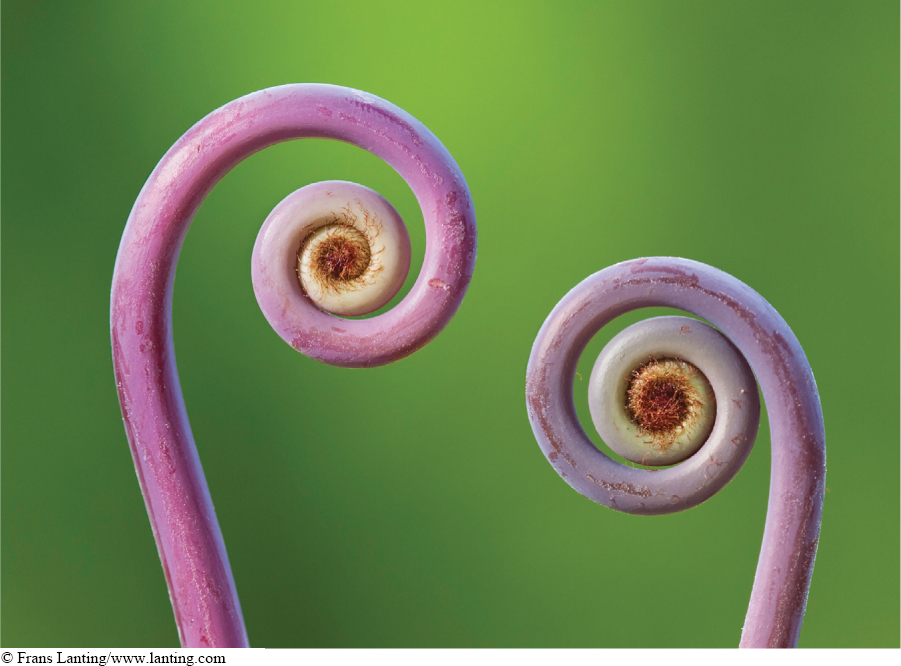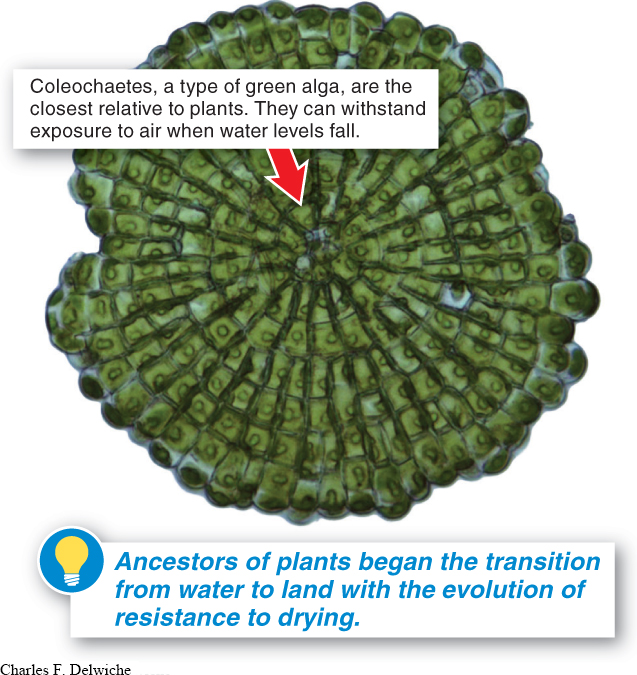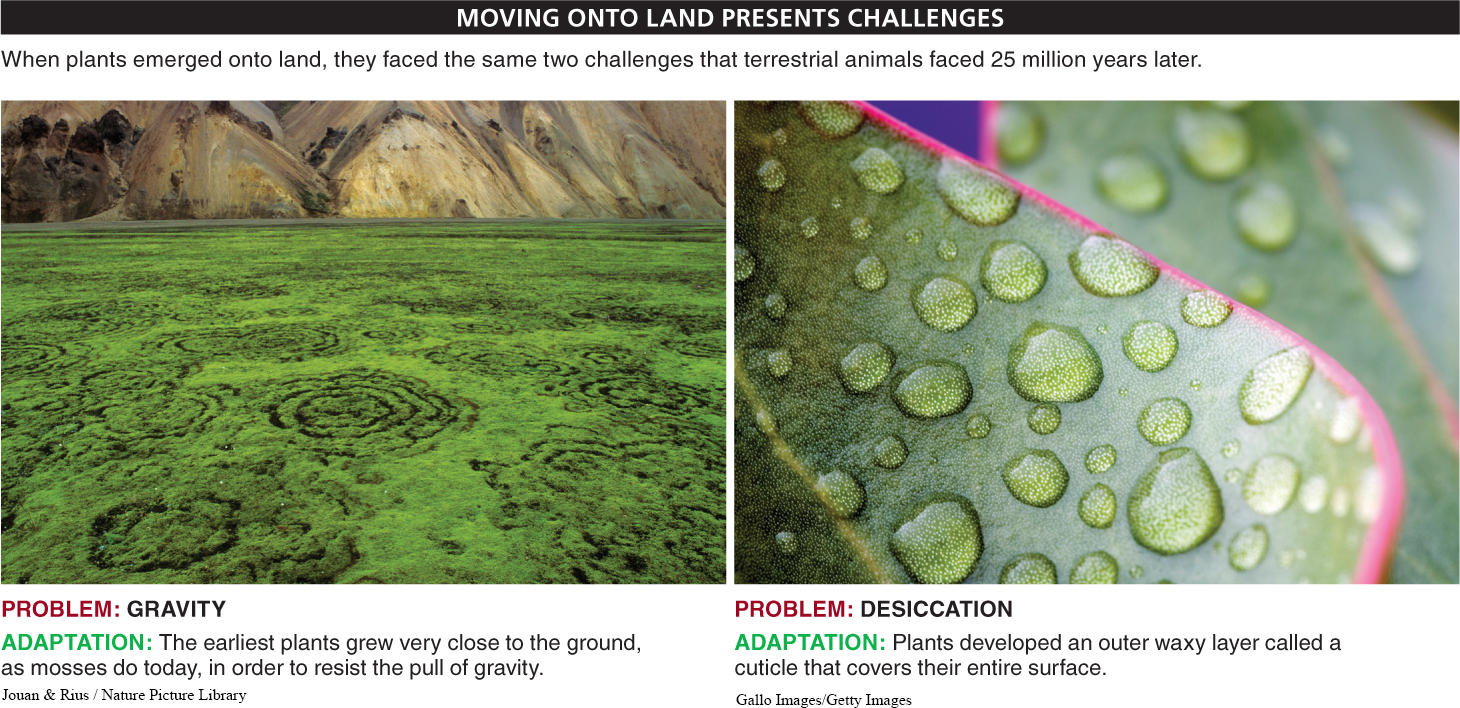
The aquatic ancestors of land plants were green algae, which are classified by many taxonomists as part of the plant kingdom. Like the land plants, green algae are multicellular, photosynthetic eukaryotes, but they live only in water or on very moist land surfaces. As water dwellers, green algae do not require specialized structures to obtain water and nutrients; water simply enters their cells by osmosis, and the nutrients they require are in solution in the water that surrounds them. Some green algae, such as sea lettuce and stoneworts, even look like land plants. But there is enough uncertainty among taxonomists about the best classification of green algae that some classify them within the protist kingdom, and they consider some green algae that look like slime on rocks—

The first land plants appeared about 472 million years ago. They weren’t impressive-
As land plants emerged, they faced the same two challenges that were to confront the first terrestrial animals, some 25 million years later: supporting themselves against the pull of gravity and reducing evaporation so they didn’t dry out. The second of these problems was the more urgent. The earliest plants did not have to grow upward—

498
TAKE-HOME MESSAGE MESSAGE 12.2
The first land plants were small, had no leaves, roots, or flowers, and could grow only at the water’s edge. Nonetheless, they set the stage for the enormous diversity of terrestrial plants and animals on earth today.
What are the two key challenges that plants faced when they colonized terrestrial environments?
The two primary challenges were supporting themselves against the force of gravity and reducing water loss so they did not dry out.